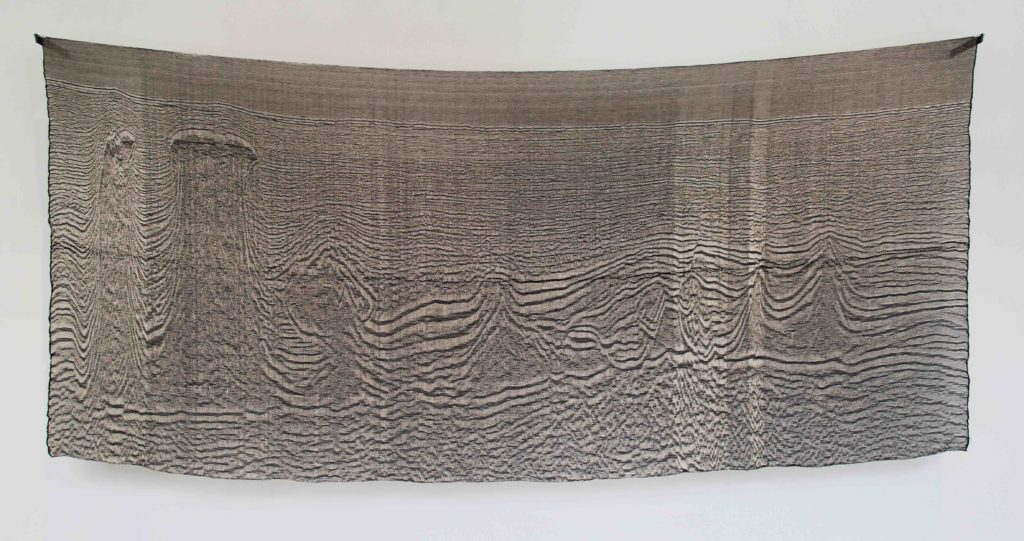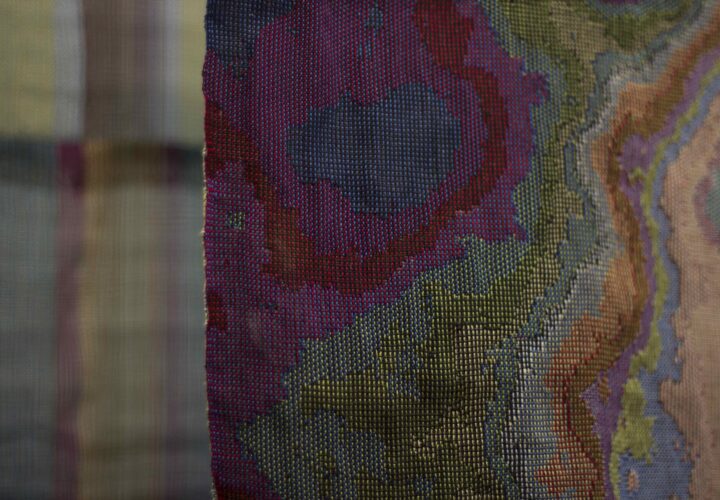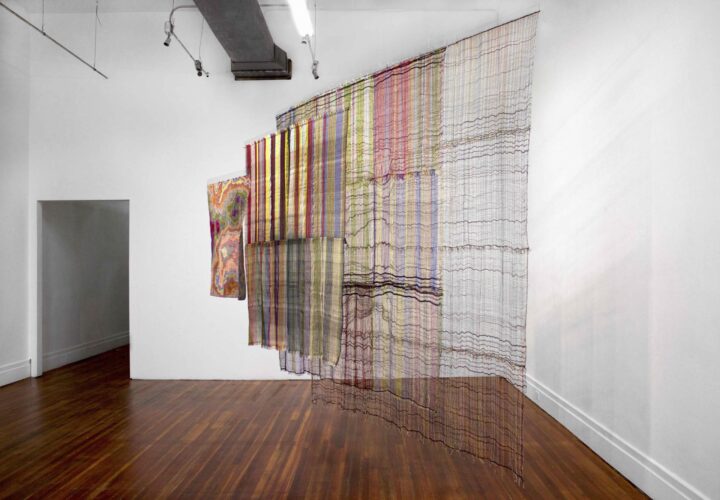
Minneapolis-based artist Heather MacKenzie received her undergraduate degree from Brown University and her MFA from The School of the Art Institute of Chicago. Here, she discusses how weaving has come to feel like a second language, and two of her series that pair modern technology with ancient art forms.
“I went to a prep school with an amazing arts program. I found myself in a weaving studio at age 15. At that point, I had no idea what I wanted to do—I wasn’t even thinking about a career track. A couple of years later, I took a workshop with an artist named John McQueen, who does figurative basket sculptures. It was there that I thought, ‘I can imagine myself doing this.’ I was 17 at the time, and I didn’t have a clear concept of what an artist was—I thought they lived in vans and traveled around the country. At the end of college, I received a fellowship to study Kente weaving in Ghana for a year. I lived for about five months with a weaving family, and I kept to their schedule, weaving for 10 hours a day, six days a week. After that, something changed in my brain. Weaving became more of a language that I could speak than a skill that I possessed. I don’t primarily consider myself an image-maker. I get a lot of pleasure thinking about structure and the structure of cloth. If you put a thread over another thread, what happens?
In grad school, I began my series Seismic Landscapes. At the time, I was researching how acrylic is made and how oil is refined. As a part of that research, I came across these beautiful images of the land that were pulled from the U.S. Geological Survey. I had also just moved to Chicago—one of the flattest places in the world—from Oregon, where I was used to seeing mountains. I now began imagining what the earth might be like below the surface. At The School of the Art Institute of Chicago, we had all these large spools of thread that had been there since the late 1990s. The thread—originally brought in as part of a design competition funded by Amoco Oil Corporation— was difficult to identify, had a low melting temperature, and smelled bad. It was the perfect material for my series. I pinned layers together to hang in a sculptural way. They moved and cast shadows on the wall behind them.
For my series Diamond-Square Algorithm: Four Extrapolations, I worked with a hand-operated loom that was assisted by a computer. It used a six-color tapestry warp—these colors are on the loom, and you mix them and bring certain colors to the surface of the cloth to create images. The Diamond-Square Algorithm is used for creating virtual landscapes online with an embedded randomizing algorithm, which produces believable and unique landscapes. I played with the algorithm in a program called Mathematica, and constructed an image of the smallest of the four squares first—the image I created inside the computer program. Then I took a line of data from the image I had created and used it to create the next layer of textile. Each layer has the same number of threads, but becomes larger each time, so the final layer looks like it’s disintegrating. I don’t hang out in virtual spaces—I don’t play video games or interact with any of that stuff. So in the piece, I’m referencing topography, structural data within virtual realms, and our ability to create virtual topography. But more important, this piece references textile itself, which you can see in the way it’s hung. There is something beautiful about looking through the threads and seeing the way they mix with one another.”



